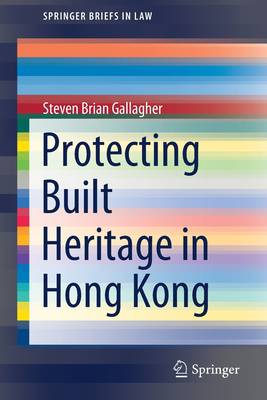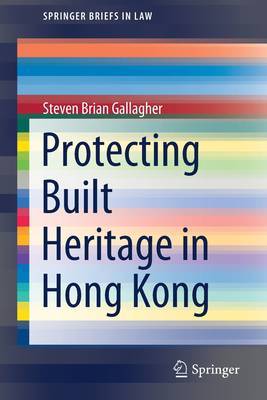
- Afhalen na 1 uur in een winkel met voorraad
- Gratis thuislevering in België vanaf € 30
- Ruim aanbod met 7 miljoen producten
- Afhalen na 1 uur in een winkel met voorraad
- Gratis thuislevering in België vanaf € 30
- Ruim aanbod met 7 miljoen producten
Zoeken
Omschrijving
This Brief is the first comprehensive coverage of law and policy intended to protect built heritage in Hong Kong. Although characterized as a city of skyscrapers and modernity, Hong Kong has a rich cultural heritage and a surprisingly rich built heritage. The text considers what "built heritage" means in Hong Kong and what built heritage there is in Hong Kong. It introduces general readers, practitioners and students to the issues facing built heritage protection and how such protection usually develops in a modern city. In particular, it considers the problems and disputes that provided the focus for development of law and policy in Hong Kong, especially the legacy of 150 years as a British colony and the consequent identification as a "borrowed" and "temporary" place. The Brief considers how effective law and policy has been in protecting built heritage under the colonial and post-colonial administrations- their successes and failures. These include the Kowloon-Canton Railway Station, the Antiquities and Monuments Ordinance, reclamation of Victoria Harbour, violent protests at Queen's Pier, and the introduction of mandatory heritage impact assessments for government projects. The text concludes noting recent successes, which may indicate a brighter future for the protection of Hong Kong's built heritage.
Specificaties
Betrokkenen
- Auteur(s):
- Uitgeverij:
Inhoud
- Aantal bladzijden:
- 111
- Taal:
- Engels
- Reeks:
Eigenschappen
- Productcode (EAN):
- 9789811650703
- Verschijningsdatum:
- 5/09/2021
- Uitvoering:
- Paperback
- Formaat:
- Trade paperback (VS)
- Afmetingen:
- 156 mm x 234 mm
- Gewicht:
- 185 g

Alleen bij Standaard Boekhandel
+ 198 punten op je klantenkaart van Standaard Boekhandel
Beoordelingen
We publiceren alleen reviews die voldoen aan de voorwaarden voor reviews. Bekijk onze voorwaarden voor reviews.











